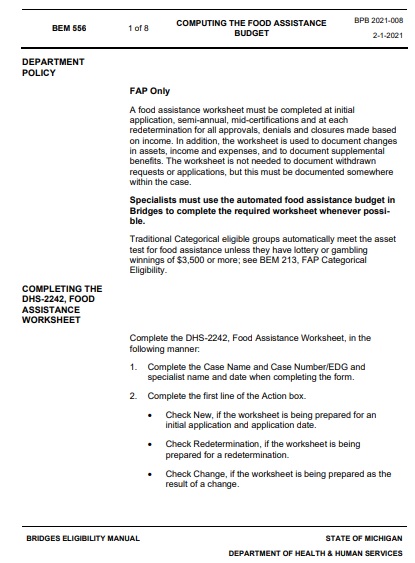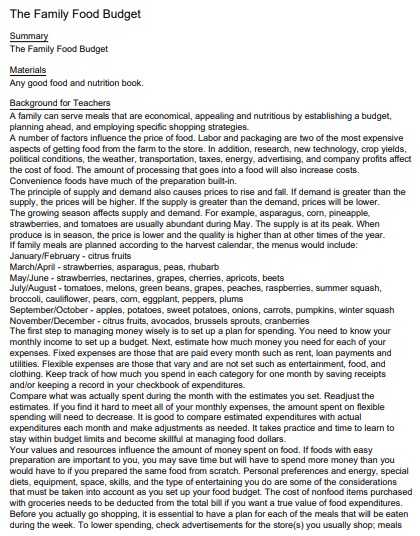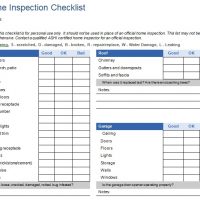In today’s fast-paced world, managing your finances effectively is crucial, and one significant aspect of this is budgeting. A well-structured budget not only helps you keep track of your expenses but also ensures that you have enough money set aside for your essential needs, such as food. This comprehensive guide will take you through the process of creating and using a food budget template, a powerful tool that can help you manage your food expenses efficiently. Get started with your monthly grocery budget template and planner which can be download as a worksheet and help you excel in budget planner. A food budget template will help you prepare a grocery list on a monthly budget and save your pocket from unexpected expenses.
Table of Contents
What is a Food Budget Template?
A food budget template is a pre-designed document or spreadsheet that allows you to plan and monitor your food-related expenses. It provides a structured framework to estimate your food costs, set spending limits, and track your actual expenditures with budget. Let’s delve deeper into how you can create and utilize a free printable meal template effectively:
Creating Your Food Budget Template
Determine Your Budget Period
The first step in creating a food budget template is to decide on the budget period. You can choose to create a daily, weekly, bi-weekly, or monthly food budget. The choice depends on your preferences and financial goals and maintain your spend on food. Creating a budget is essential to monitor how much you spend and helps you manage your income and expenses which will also help you save time and money in future.
List Your Income
Start by recording your total monthly income with our free food budget template. This can include your salary, any additional sources of income, or allowances. Having a clear picture of your income is crucial as it sets the foundation for your budget A better idea of how much you spent on groceries will help you manage the money you spend. Keep receipts is another productivity hack and will help you start tracking in which places you have been spending. It can simplify your process in making a grocery planner and add items to your list which are deemed necessary.
Identify Food Categories
Break down your food expenses into detailed categories. Common categories include:
- Groceries: This includes all the food items you purchase from grocery stores.
- Dining Out: Expenses related to eating at restaurants, cafes, or ordering takeout.
- Snacks: Money spent on snacks and quick bites.
- Beverages: Costs of beverages like coffee, tea, and soft drinks.
Segmenting your food expenses into categories helps you understand where your money is going and allows for more precise budgeting.
Set Spending Limits
Allocate a specific budget for each food category. Be realistic when setting these limits and consider your financial situation. Setting limits helps prevent overspending and ensures that you have enough money for all your food needs.
Track Your Expenses
Keep a detailed record of all your food-related expenses under their respective categories. Update your template regularly to ensure accuracy. You can use smartphone apps, spreadsheets, or even pen and paper to track your expenses.
Utilizing Your Food Budget Template
Monitor Your Spending
Regularly review your food budget template to check if you’re sticking to your budget. Monitoring your spending ensures that you are on track and helps you identify areas where you might be overspending.
Identify Spending Patterns
Over time, your Food Budget Template will reveal spending patterns and you can also create a chart to track how much you are food spending. You might notice that you tend to spend more on dining out during weekends or that your grocery bills vary from month to month. Identifying these patterns allows you to make informed decisions about your food budget.
Find Cost-Saving Opportunities
Analyze your template to identify areas where you can cut costs. Here are some cost-saving strategies:
Meal Planning: Plan your meals in advance to reduce food waste and make efficient use of your groceries.
Coupons and Discounts: Look for discounts, coupons, and loyalty programs when shopping for groceries or dining out.
Cooking at Home: Consider cooking at home more often as it’s usually more budget-friendly than dining out.
By identifying cost-saving opportunities, you can make your food budget more efficient.
Achieve Financial Goals
By following your Food Budget Template diligently, you can work towards achieving your financial goals. Whether you’re saving for a vacation, paying off debts, or building an emergency fund, a well-managed food budget can help you reach these milestones faster.
Advantages of Using a Food Budget Template
Creating and sticking to a Food Budget Template offers several advantages:
Financial Awareness
A Food Budget Template provides a clear picture of where your money is going, making you more financially conscious. You’ll have a better understanding of your spending habits and can make informed financial decisions with weekly meal planner.
Expense Control
It helps you control and reduce unnecessary food-related expenses. By tracking your spending, you can identify areas where you can cut costs without sacrificing the quality of your meals.
Goal Achievement
A well-managed food budget allows you to allocate funds towards your financial goals. Whether you’re saving for a vacation, a down payment on a house, or retirement, your shopping budget can help you get there.
Emergency Preparedness
By having a budget in place, you ensure that you have enough resources set aside for unexpected situations. Whether it’s a medical emergency or a car repair, your budget can provide a financial safety net.
Tips for Effective Food Budgeting List Template
To make the most of your Food Budget Template, consider these tips:
- Be Realistic: Set achievable spending limits that align with your income and lifestyle. Avoid setting overly restrictive budgets that may be difficult to maintain.
- Track All Expenses: Even minor purchases should be recorded in your budget to ensure accuracy. These small expenses can add up over time.
- Review Regularly: Check your template frequently and make adjustments when necessary. Life circumstances and expenses can change, so your budget should be flexible.
- Plan Meals: Meal planning can help you save money on groceries and reduce food waste. When you plan your meals, you’re less likely to make impulse purchases.
- Look for Deals: Take advantage of discounts, coupons, and loyalty programs when shopping for groceries or dining out. These savings can add up significantly over time.
- Involve Family: If you have a family, involve them in the budgeting process. This ensures that everyone is on the same page and committed to the budget.
- Stay Committed: Consistency is key to successful budgeting. Even when faced with temptations, stick to your budget to achieve your financial goals.
Travel Meal Budget Template
Penalty for Underspending Food Budget Template
School Food Budget Template
Healthy Foods on a Budget Template
Healthy Meal Planning Budget Template
Food Shopping Budget Template
Global Food Security Act Crosscut Budget Report Template
Menu Planning & Food Budget Template
Food Grocery Budget Template
Food Budget Worksheet for Students
Food Budget Template Excel
Food Assistance Budget Template
Food and Drug Budget Template
Family Food Budget Template
Child Care Food Budget Template
Event Food Budget Template Excel
Basic Division Food Budget Template
Conclusion
A food budget template is a valuable tool for managing your food expenses efficiently. By creating one and following the guidelines outlined in this article, you can take control of your finances, reduce unnecessary spending, and work towards achieving your financial goals. You can also access wide variety of budget binder additionally on Microsoft and exceltmp.com as well and use the free as well. A effective budget planner will help you stay organized as long as it easy to use and keep a track money on food on how much spend you make.
Remember, effective budgeting is not about depriving yourself but about making informed choices that lead to financial stability and peace of mind.
Faqs (Frequently Asked Questions)
It’s advisable to update it regularly, preferably at least once a week, to ensure accurate tracking.
Review your budget and see where you can reallocate funds to cover the overspent category. Adjust your spending habits accordingly.
Absolutely! Many budgeting apps and software are available to streamline the process and provide real-time insights.
Yes, it’s important to account for occasional dining out in your budget to maintain a realistic and sustainable approach.
Consider having a separate category in your template labeled “Miscellaneous” or “Emergency Fund” to cover unforeseen costs without disrupting your primary budget categories.






















